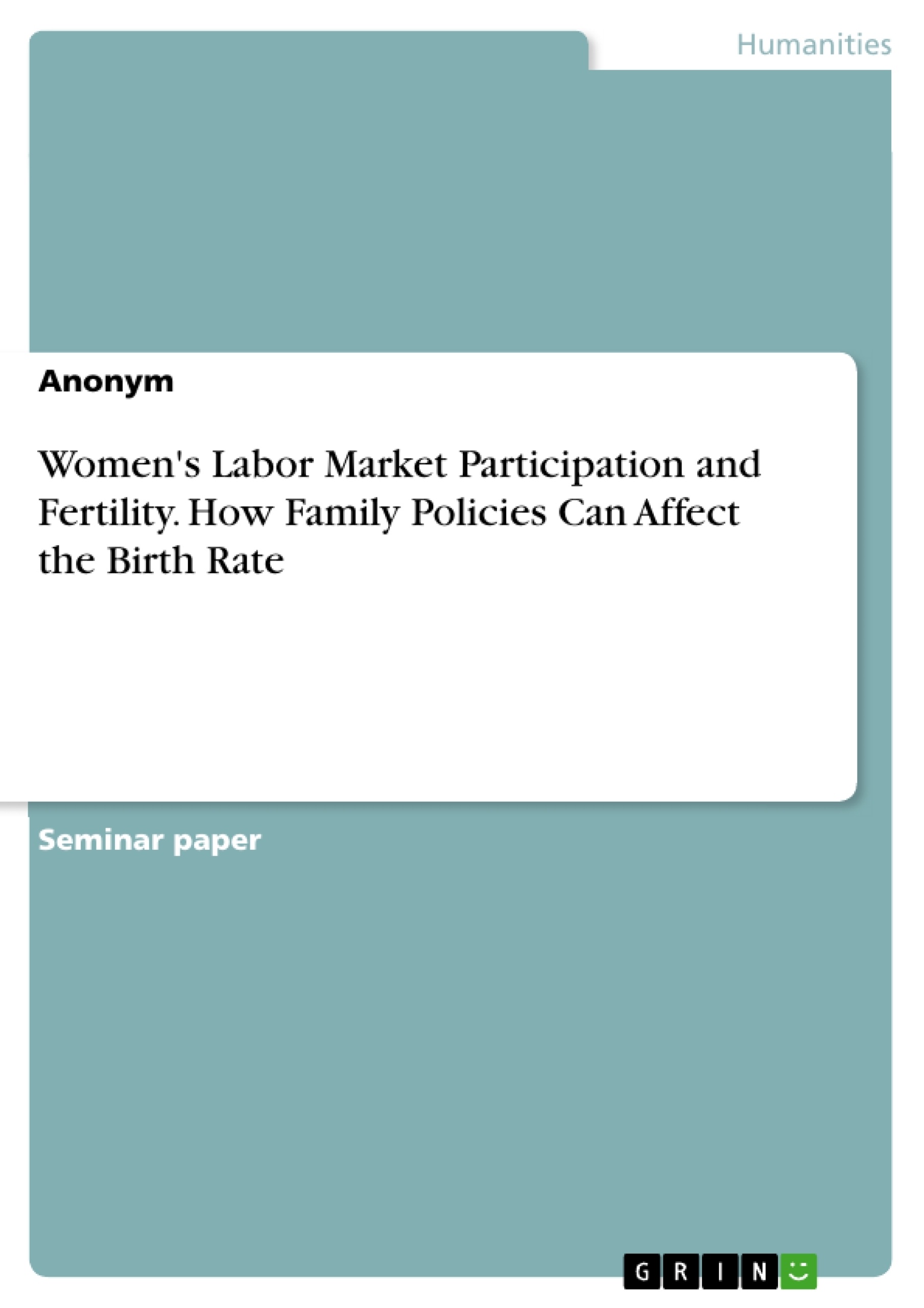In order to discuss the effects of family policy measures on fertility development in more detail, the first part of this paper provides an overview of the female employment rate development in Germany, along with the development of fertility in Germany compared to other countries such as Norway and Sweden, to illustrate country-specific progress, followed by a description of the relationship between education backgrounds and fertility. The last chapters show which gender inequalities still prevail and what influence family policy measures, particularly money and time-related measures such as parental allowance and the laying claims to take parental leave by fathers had on birth development.
Inhaltsverzeichnis (Table of Contents)
- Introduction
- Fertility in Germany: EU comparison
- Female employment rate
- The welfare state and family policy
- Causal relationships
- Parental benefit regulations and other family benefits in comparison
- Tax policy and female labor market participation
- Conclusion
Zielsetzung und Themenschwerpunkte (Objectives and Key Themes)
This paper investigates the connection between the declining birth rate in Germany and the changing career opportunities for women, analyzing how these factors contribute to the challenges of reconciling family life and work. The paper explores the impact of societal changes, including individualization and the increasing employment of women, on fertility rates, examining the role of family policy measures in supporting a more egalitarian approach to parenting responsibilities.
- The decline in fertility rates in Germany and its relationship to women's employment
- The impact of family policy on the compatibility of work and family life for both men and women
- The influence of societal changes, such as individualization and the increased employment of women, on family structures
- A comparative analysis of fertility rates and family policy measures in Germany and other European countries, particularly the Scandinavian countries
- The role of gender equality in family policy and the need for a more equitable division of labor within families
Zusammenfassung der Kapitel (Chapter Summaries)
The first part of the paper sets the stage by providing an overview of the female employment rate development in Germany and its relationship to fertility rates, drawing comparisons with other countries like Norway and Sweden. This section also examines the link between educational backgrounds and fertility.
The subsequent chapters delve deeper into the impact of family policy measures on fertility trends in Germany, analyzing the effectiveness of financial and time-related measures like parental allowance and parental leave. The paper aims to understand how these measures affect the choices parents make regarding family size and the compatibility of work and family life.
Schlüsselwörter (Keywords)
The main keywords and focus topics of this work include: fertility rates, female employment, family policy, gender equality, parental allowance, parental leave, work-life balance, demographic transition, individualization, societal norms, and European comparison. The research delves into the interplay between these concepts to understand the factors influencing fertility trends and the challenges faced in achieving a more equitable distribution of family responsibilities between men and women.
- Arbeit zitieren
- Anonym (Autor:in), 2022, Women's Labor Market Participation and Fertility. How Family Policies Can Affect the Birth Rate, München, GRIN Verlag, https://www.hausarbeiten.de/document/1338312


